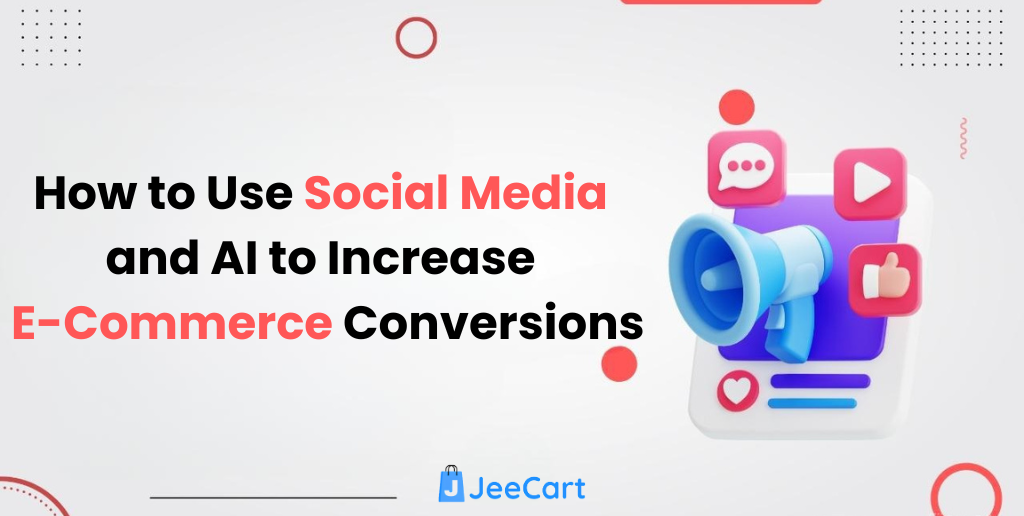Picture this: You find the perfect couch online. The color looks great, the size seems right, and the description checks all the boxes. But when it arrives?
It doesn’t fit your space, and the shade is completely off.
Now, you’re stuck with the hassle of returning it. Sounds familiar, right?
This is exactly why Augmented Reality (AR) in Ecommerce is changing the game.
With AR, you can visualize that couch in your living room before buying it.
No more guesswork, just smarter, more confident shopping.
71% of consumers say they would shop more often if AR was available, and 40% are even willing to pay more for a product they can experience in AR.
The shift is happening, and brands like IKEA, Sephora, and Nike are leading the way.
In this blog, we’ll explore:
- The benefits of AR in Ecommerce
- Types of Augmented Reality in Ecommerce
- Augmented Reality vs. Virtual Reality in online shopping
- Real-world examples of AR transforming retail
- Top AI Tools for AR Implementation
- Challenges and future scope of AR in Ecommerce
Future of Augmented Reality
- How you can integrate AR into your Ecommerce business?
- Are you ready to witness some real transformation in business? Hop in!
The Game-Changing Benefits of Augmented Reality in Ecommerce
1. Try Before You Buy: Virtual Try-Ons
Ever hesitated to buy a pair of sunglasses online because you weren’t sure how they’d look?
Brands like Sephora and Warby Parker solve this with AR-powered virtual try-ons.
Customers can see exactly how products look on them before hitting ‘Buy Now.’
2. 3D Product Visualization: See It in Your Space
Want to know how a new table will fit in your dining room?
IKEA Place lets shoppers place true-to-scale 3D furniture in their homes. No measuring tape required!
3. Reduced Returns: Confident Purchases
Did you know that returns cost online retailers over $550 billion annually?
AR helps eliminate buyer’s remorse by ensuring customers get exactly what they expect.
4. Higher Engagement & Sales
Customers who use AR spend 2x more time on product pages and are 94% more likely to buy.
More engagement = higher conversions.
5. Competitive Advantage: Stand Out from the Crowd
In a world where every store looks the same, AR helps brands create memorable shopping experiences.
Whether it’s an interactive fitting room or a virtual showroom, AR makes shopping fun and immersive.
Types of Augmented Reality in Ecommerce
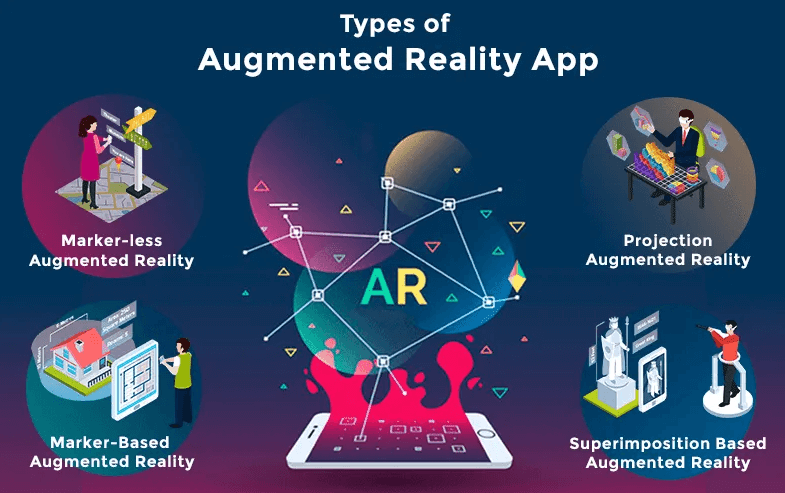
Not all AR experiences are the same! Here are the main types of AR that make online shopping more exciting:
1. Marker-Based AR (Image Recognition)
How it works: Uses a smartphone camera to scan a marker (like a QR code) and display a 3D product.
✅ Example: IKEA Place lets users scan their floor and place virtual furniture in their homes.
2. Markerless AR (Spatial AR)
How it works: Uses GPS, accelerometers, and cameras to place AR objects anywhere without scanning a marker.
✅ Example: Google’s AR Search lets you place 3D animals, furniture, and even space models in your surroundings using just your smartphone—no QR codes or special markers needed!
3. Projection-Based AR
How it works: Projects digital visuals onto real-world surfaces, making it look like the object is physically present.
✅ Example: Interactive fitting rooms in stores where virtual clothes appear on your reflection.
4. Superimposition AR
How it works: Replaces parts of the real-world view with augmented content.
✅ Example: Sephora Virtual Artist swaps out lipstick shades in real-time.
Each type brings a unique shopping experience, making augmented-reality shopping more fun and interactive!
AR vs. VR in Ecommerce: What’s the Difference?
|
Feature |
Augmented Reality (AR) | Virtual Reality (VR) |
|
Experzzience |
Enhances the real world with digital elements | Creates a completely digital, immersive world |
| Interaction | Users can see and interact with products in their environment |
Users are fully immersed in a virtual store |
| Use Case | Virtual try-ons, 3D product previews, in-store navigation |
Virtual showrooms, immersive brand experiences |
| Devices Needed | Smartphones, tablets, AR glasses |
VR headsets (Oculus, HTC Vive, etc.) |
Example: IKEA uses AR for furniture visualization, while brands like Gucci offer VR shopping experiences for an interactive digital store.

Top 10 AI Tools for AR Implementation
These AI-powered tools make augmented reality Ecommerce apps easier to develop and integrate. Here are the best options for businesses:
1. Google ARCore

- Real-world environment mapping
- Motion tracking for AR experiences
- Light estimation for realistic visuals
2. Apple ARKit
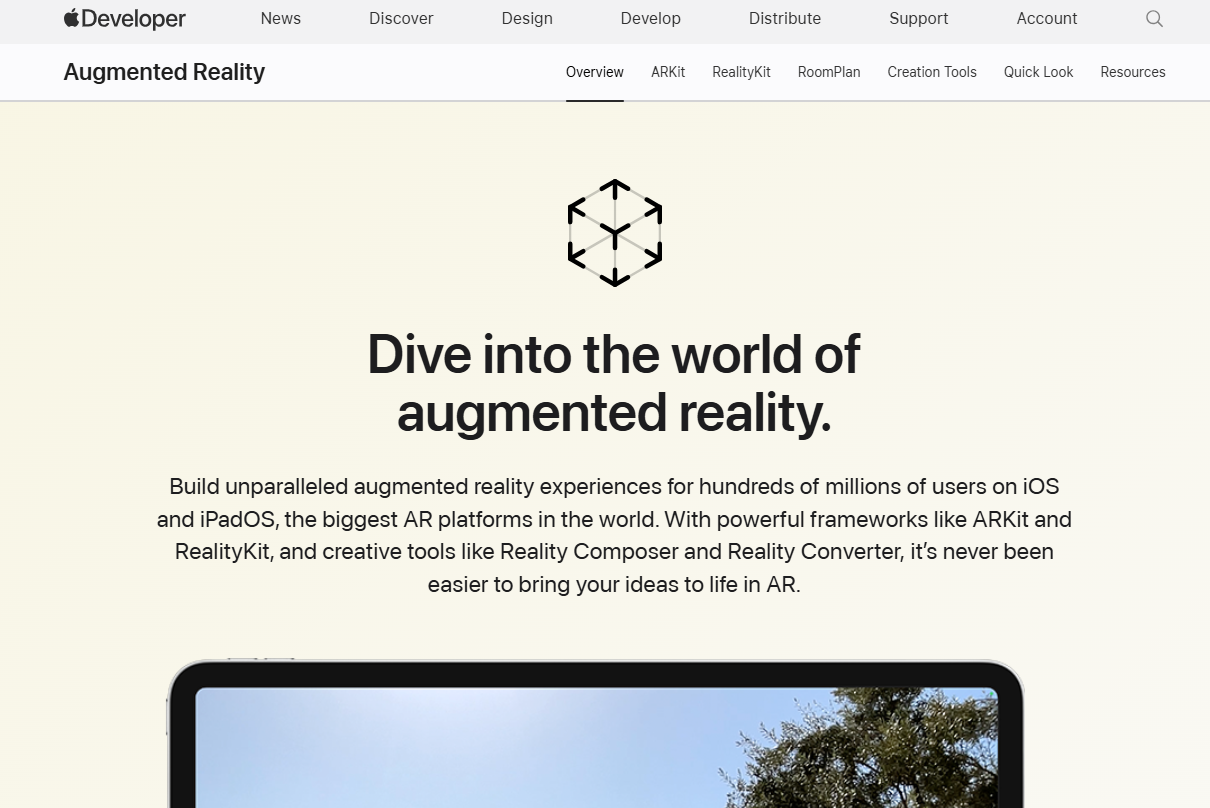
- Face tracking for virtual try-ons
- 3D object recognition
- Scene reconstruction for immersive AR
3. 8th Wall

- Web-based AR (no app needed!)
- Cross-platform compatibility
- Real-time AR interactions
4. ZapWorks
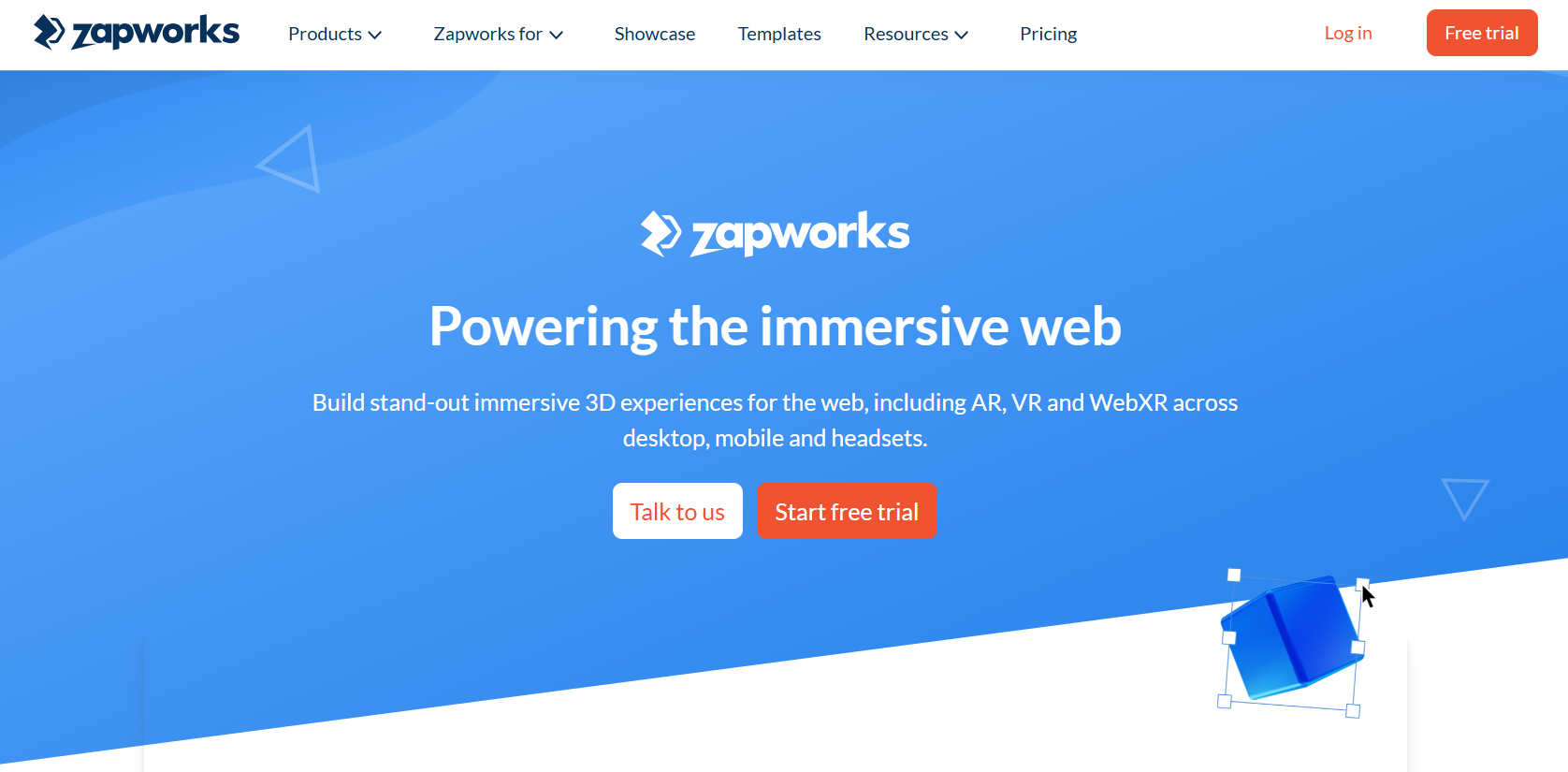
- Drag-and-drop AR creation
- Supports interactive 3D models
- Analytics for tracking AR engagement
5. Vuforia

- AI-powered image and object recognition
- Cloud-based AR storage
- Real-time AR rendering
6. BlippAR

- WebAR for mobile browsers
- AR ad campaigns
- Custom branding features
7. DeepAR
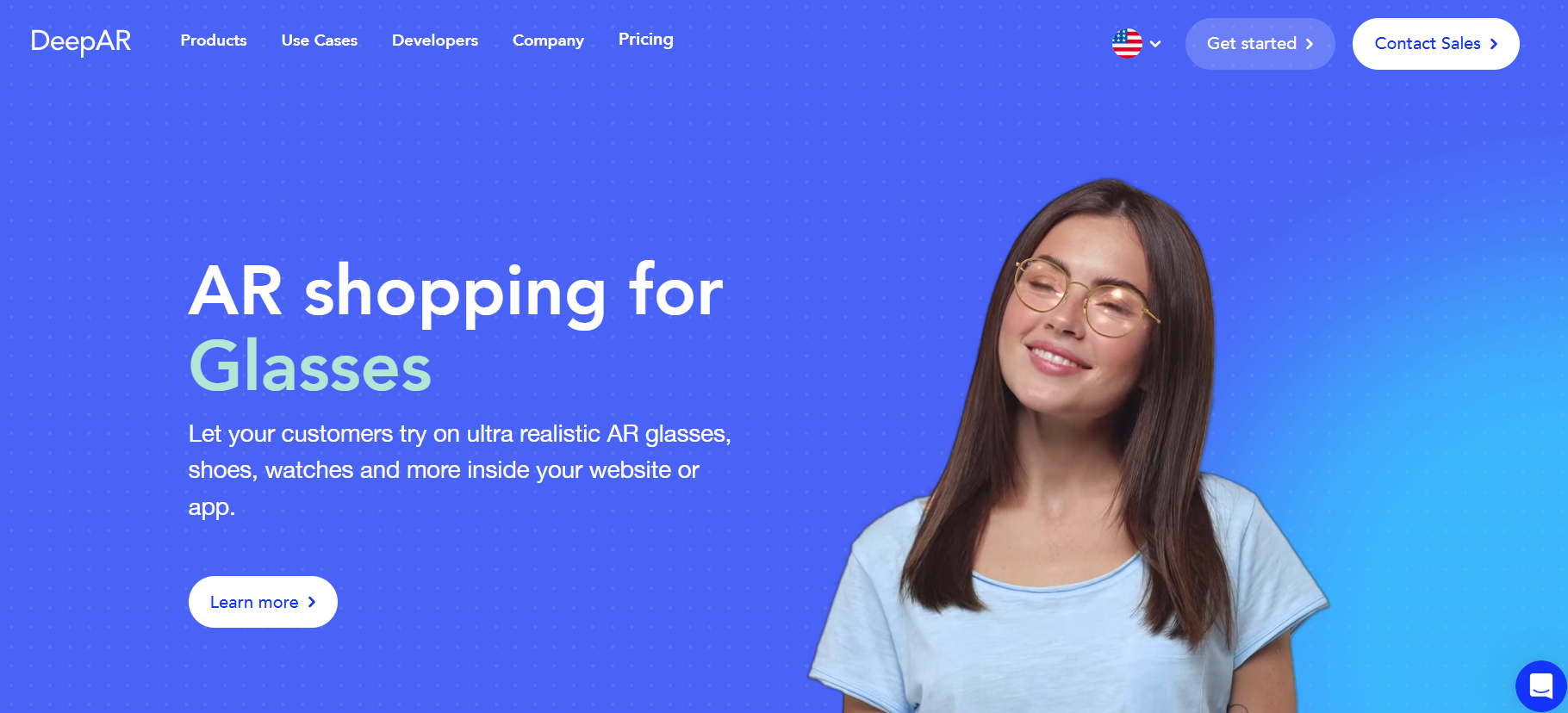
- Face-tracking filters
- 3D animation effects
- AI-driven AR enhancements
8. Wikitude

- GPS-based AR integration
- 3D recognition & tracking
- Multi-platform support
9. EasyAR
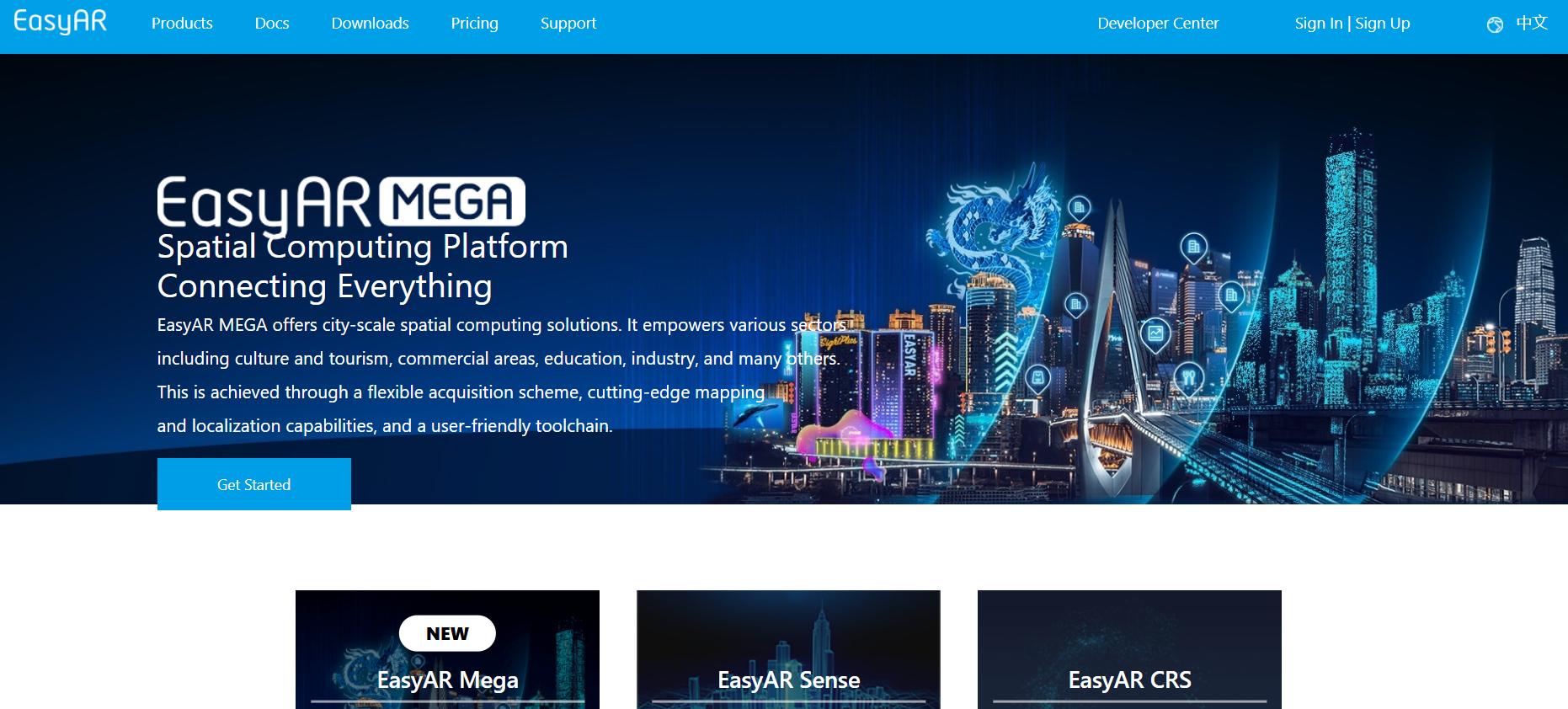
- Lightweight AR SDK
- Supports real-time mapping
- Cost-effective for small businesses
10. Banuba

- Beauty AR filters
- Virtual try-on for cosmetics
- AI-powered facial tracking
With these tools, even small businesses can implement AR and VR in Ecommerce without breaking the bank!
Real-World Examples of Augmented Reality in Retail
1. Warby Parker – Try Before You Buy (Glasses Edition)
Warby Parker’s AR app allows users to try on different eyeglass styles using their smartphone cameras. No need to visit a store!
2. ASOS Virtual Catwalk – Bringing Fashion to Life
ASOS lets users view clothes on virtual models in their environment, making online fashion shopping more interactive and fun.
3. Lenskart’s AR Try-On – Finding the Perfect Fit
Lenskart uses facial recognition and AR to help customers pick eyeglasses that suit their face shape and style.
4. Dulux Visualizer – No More Paint Guessing
Dulux’s AR tool lets users see how different paint colors will look on their walls before purchasing.
5. Pepsi’s AR Billboard – A Fun Shopping Experience
Pepsi created an AR-powered bus stop billboard that displayed fun and interactive animations, proving how AR can also be used creatively in marketing.
Challenges of Implementing AR in Ecommerce
1. High Development Costs
Developing AR features can be expensive, especially for small businesses. From 3D modeling to AI integration, the costs can add up.
2. Limited Device Compatibility
Not all users have AR-compatible smartphones or devices, which can limit the audience that can experience AR shopping.
3. Technical Learning Curve
Both businesses and customers need time to adapt to AR. Implementing and optimizing AR features requires technical expertise.
4. Data Privacy Concerns
Since AR apps often require access to cameras and personal data, privacy concerns can deter some users from adopting the technology.
Future Scope of AR in Ecommerce
1. AI-Powered AR Shopping Assistants
Imagine a virtual assistant that suggests products based on your preferences, previous purchases, and even how they look on you. AI + AR will make shopping more personalized than ever.
2. Enhanced Virtual Stores
Retailers will go beyond traditional websites and apps, offering fully interactive virtual shopping experiences with AR-enhanced showrooms.
3. Integration with Wearable Tech
Smart glasses and AR headsets like Apple Vision Pro will take AR shopping to the next level, offering a hands-free and immersive experience.
4. AR-Powered Social Shopping
Brands will integrate AR into social media platforms, allowing users to try on and buy products directly from Instagram, Snapchat, and TikTok.
Parting Thoughts
Hope you enjoyed this blog! We’ve explored how augmented reality in Ecommerce is reshaping the shopping experience—making it interactive, fun, and hassle-free. From virtual try-ons to 3D product previews, AR is helping businesses increase sales, reduce returns, and boost customer confidence.
The best part? You don’t need to be a tech giant to integrate AR. Whether you’re a small business or an established brand, platforms like Jeecart can help you choose the right AR-powered Ecommerce solutions.
At Jeecart, we review the good, great, bad, and ugly of online store-building software—so you can find the best tools to level up your business.
Ready to embrace the future of augmented reality shopping? The time is now!
FAQs: Everything You Need to Know About AR in Ecommerce
1. Why should I care about AR shopping?
As nobody likes returning things! AR helps you buy with confidence—no more “I hope this fits” moments.
2. Do I need fancy gadgets for AR?
Nope! Your smartphone is all you need to dive into AR shopping fun. No headsets, no hassle.
3. Is AR just for big brands?
No way! Even small businesses can leverage AI to skyrocket their sales.
4. How much does AR cost for an online store?
It depends! A basic AR setup is affordable, while high-end, AI-powered AR can cost more.
5. Will AR replace old-school online shopping?
Nah, but it’s making it way more fun and stress-free! Say goodbye to shopping regrets.
6. What’s next for AR in shopping?
AR-powered personal shoppers Social media AR filters for instant try-ons Fully immersive virtual malls

